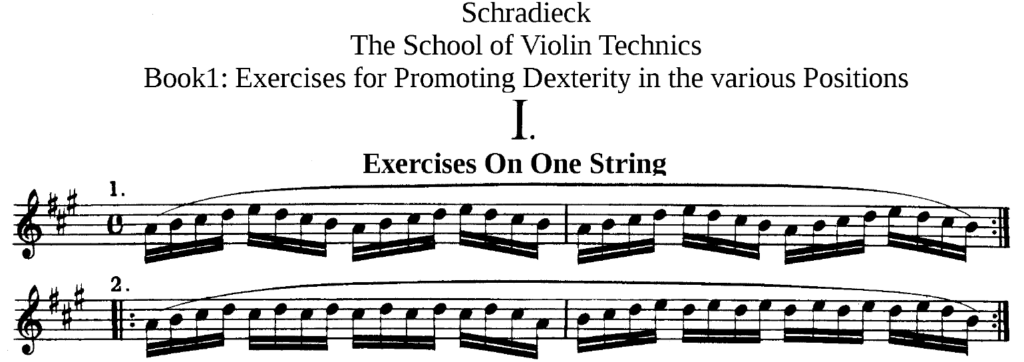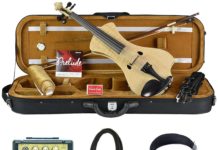Many musicians claim to devote their time to practicing their instrument, yet not many can really make it productive. The truth of the matter is, a non-dynamic practice session can become boring.
While it is true that engaging in a consistent and regular practice session allows musicians to become better performers, practicing without mixing the session up with a variety of practice methods can actually be much less productive than you think. It’s not about how much time you practice, but how you practice. If done right, a 20-minute session can actually show much better results than a 60-minute session.
Furthermore, other musicians tend to practice instinctively. That means they just show up, run through the piece, and then finish the session immediately. Others will just keep repeating the same measures over and over again. Because of this, many musicians will get bored quickly.
It is worth noting that repetition is a common misconception in any practice session. There are better ways to use your time without repeating the piece over and over again, or even just going through it once.
As a musician, it is necessary to identify ways to make your practice session worthwhile and more productive so that you spend more time making music and not practicing. Below we will review five ways you can improve your practice sessions.
1. Set a Specific Goal per Session and Aim for It
It is always ideal to start with the end in mind. Even before starting your practice, you should set clear and specific goals that you want to achieve by the end of your session. By doing so, you are able to track your progress while identifying any problems at hand. If you set too broad of a goal, you might be spending more than your allotted time for practice, while never actually achieving your goal.
You can accomplish this tip by dividing your session into milestones. In each milestone, set a specific goal you have to do in a given time. For example, if you have set the first ten minutes of your time to practice the primary few measures of a piece, you have to stick to such goal. By doing different tasks in a matter of one hour, for example, you could make most of your practice session.
2. Always Warm Up Before Practice
Warming up before practicing is something that is often overlooked by a lot of musicians. It is worth noting that warming up has a lot of advantages for musicians. Primarily, warming up helps reduce the risk of injuries, such as sprains in your hands, which, when untreated, can prevent you from playing for weeks. Hand injuries like carpal tunnel or tendonitis will only slow you down as a player.
Devote the first few minutes of your session warming up. This can be your first milestone for the practice session. You could try doing a few simple scales or just some basic runs on a string. One of my favorite warm-ups is from the first page of Schradieck’s School of Violin Technics. Another technique is to stretch your arms and fingers gently. When practicing as a group, you could invite your colleagues to warm-up with you to make your session more productive.

3. Practice One Section at a Time
Aside from dividing your session into milestones, you could also break your piece into different sections. By breaking down the component parts of the piece, you can focus on practicing each section carefully. You could devote thirty minutes of your session to practicing the first few measures. When you think you have mastered those sections, you could move on to the next portion of the piece during the latter part of your session. Repeat this technique until you have learned the whole piece.
Pushing yourself to learn the entire piece during your first practice session is counterproductive, and it could lead to fatigue and stress. Since more does not always mean better, you should take note that the quality of your performance is much better than the quantity that you have learned within a session.
4. Always Remember to Practice Slowly
One of the things that you should remember is that time is not equivalent to progress. Just because you practiced the piece at a fast tempo does not mean you already are better at playing. You should also consider that you learn best by taking things slowly and carefully.
When you are still learning the piece, begin playing it at a much slower tempo. If you play it immediately at its indicated speed, you might end up stressing yourself. To guide you better with your tempo, you could use a metronome as your guide during the span of your practice. Start slowly at around 60 beats per minute, and increase your speed as you move along with your piece.
5. Ask For Feedback From Colleagues and Teachers
Feedback can make you a significantly better player. When you are practicing, you should take into account what your colleagues have to say about your practice. If you are still a student, you could seek the advice of your instructor or teacher about your progress. They could gauge your strengths and weaknesses better. By doing so, you could identify the things that you need to improve and the things which you can focus less time on. Do not let the criticisms burden you. Instead, let these criticisms help you to develop your skills.
Conclusion
Like any other activity, practice sessions take time and effort. Since mastering a musical instrument is a never-ending process of learning and relearning, the only way to improve is to keep practicing. However, you should keep in mind these tips for practice to make sure that you never get bored while practicing and so you continue improving. This way, you will not only have a productive practice session, but you will also be able to perform better. So grab your instrument and start practicing, the right way!
Table of Contents






